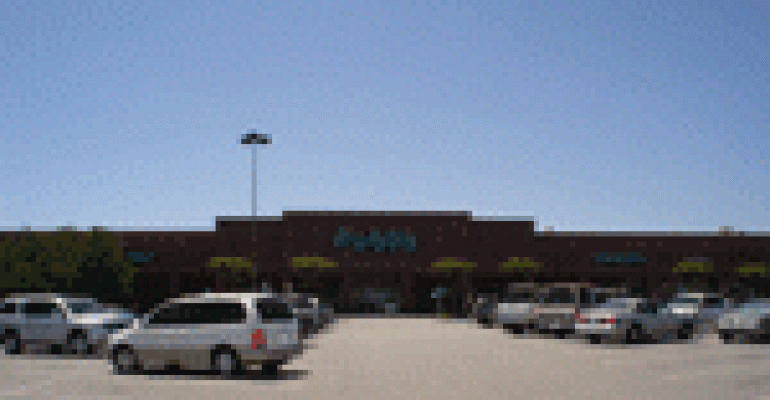
Developers Diversified Realty Corp. last week announced the sale of 63 properties to Phillips Edison & Co. in a $603 million deal that was noteworthy for more than just its size. The deal is the biggest sign yet that the real estate investment climate has shifted on class-B and class-C retail assets.
The deal features 52 properties that Columbus, Ohio-based Developers Diversified considered non-core, including 21 properties that it had acquired when it purchased Inland Retail Real Estate Trust, Inc. for $6.2 billion in October of last year. An additional 11 properties are expected to trade hands shortly. Overall, the portfolio contains 5.7 million square feet of space, made up primarily of neighborhood and community shopping centers, class-B and class-C assets averaging approximately 100,000 square feet and located throughout 16 states, including New York, Virginia, Ohio, Florida and North Carolina. The centers are 93 percent occupied.
In recent years, such a portfolio would have been gobbled up in a market with a seemingly insatiable demand for retail real estate. But Developers Diversified executives say they were surprised that only a handful of offers emerged for the portfolio. “Interest rates are the catalyst,” says Joe Padanilam, senior vice president of acquisitions with the company. “I think the rate movement really woke people up and forced them to realize that there should be a spread between A-quality properties and those that are lower quality.”
The portfolio traded at a cap rate of 7.25 percent, 50 basis points above the national average. A year ago, Padanilam believes the same portfolio might have been below 7 percent.
What's happened on the Developers Diversified deal is not an anomaly. Many brokers say that investors across the country are starting to back off class-B and class-C properties even while action on class-A properties is heating up.
“On the institutional sales side, people are getting more discerning about what they want,” says Philip D. Voorhees, senior vice president of retail investments with the international brokerage firm CB Richard Ellis, Inc.
Most point to a shakeout in the debt markets as the main culprit.
The crash in the sub-prime residential mortgage market has had a chilling effect on the CDO and CMBS markets. Investors that got burned by sup-prime backed bonds are not eager to get hurt elsewhere. Investors are demanding pools with less risk. So conduit lenders that supply the loans to the pools have tightened underwriting standards. Concretely, that has meant an end to 10-year interest only loans and high loan-to-value deals. And pricing is also going up with some borrowers saying they are being quoted rates 150 to 400 basis points higher than what were available earlier this year.
And because these sorts of deals were most prevalent on B and C properties, the market has cooled. Meanwhile class A, where more all-cash buyers operate, has been less affected. And, if anything, there has been a renewed "flight to quality," which has kept pricing on A assets steady and even driven it down in some markets.
"People justified low cap rates because they were juicing their returns with interest-only money and low interest rates," says Gerard Mason, executive managing director of Granite Partners LLC. Until recently, asset quality didn't factor as highly into investors' equations.
Anecdotally, brokers say that lower quality assets are trading at cap rates 30 to 50 basis points higher than they were 12 months ago and some believe they have softened as much as 100 basis points in some areas.
The deal has significance beyond its pricing trends.
It is the largest to date for Cincinnati, Ohio-based Phillips Edison, a company that in the past 17 years has quietly built a portfolio of 23.4 million square feet. Phillips Edison plans to apply its value-add redevelopment strategy to the centers, with Michael Phillips, the company’s president, noting that the properties fit perfectly within Phillips Edison’s PECO Opportunity Fund III.
The $275 million equity fund, made up of 11 institutional and several foreign investors, was created to target grocery-anchored centers in secondary markets that are in close proximity to primary metro markets. The Developers Diversified deal allowed the firm to close PECO Opportunity Fund III 13 months ahead of schedule.
Phillips Edison’s strategy is to acquire under-performing assets, renovate and re-lease them, gaining on the increase in rents. Planned changes for the Developers Diversified portfolio include the leasing up of existing vacancies and new anchor tenants for certain centers, Phillips says.
From Developers Diversified's perspective, the proceeds of the sale will be used to pay the $2.3 billion in debt the company incurred when it acquired Inland. On June 8, the company also announced that it was transferring 63 shopping centers, 54 of them former Inland assets, to its DDR Domestic Retail Fund I. This portfolio, with a gross asset value of $1.5 billion, is made up mostly of grocery-anchored shopping centers located in primary markets of Southeastern United States, including Miami, Tampa, Atlanta and Orlando.
-- Elaine Misonzhnik & Jennifer Popovec

